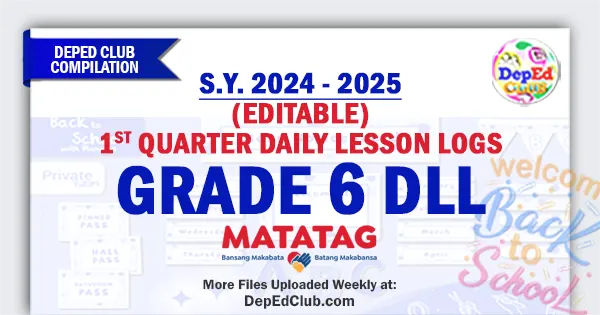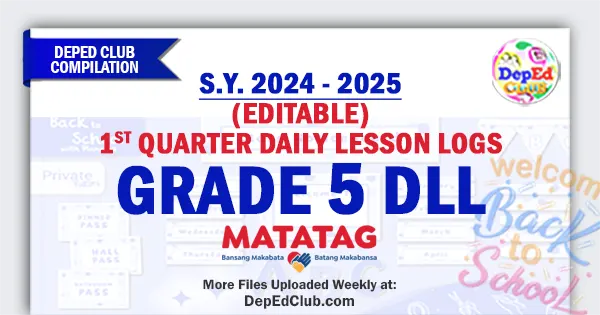Quality Classroom Assessment for the 21st Century | 2nd Periodical Tests
Periodical tests as classroom assessment is among a teacher’s most essential educational tools. When properly developed and interpreted, assessments can help teachers better understand what their students are learning. By providing the means to gather evidence about what students know and can do, classroom assessment can help teachers:
- Identify students’ strengths and weaknesses
- Monitor student learning and progress
- Plan and conduct instruction
Ongoing informal and formal classroom assessment is the bond that holds teaching and learning together that allows educators to monitor teaching effectiveness and student learning. It can motivate and shape learning and instruction, can help teachers gauge student mastery of required skills, can help teachers determine whether students are prepared for tests that are used for high-stakes decisions and can help students improve their own performances
Classroom assessments do more than just measure learning. What we assess, how we assess, and how we communicate the results send a clear message to students about what is worth learning, how it should be learned, and how well we expect them to perform. Linking assessment and instruction is critical to effective learning.
Designing informative assessments requires strategic planning and a clear understanding of one’s assessment goals. What needs to be assessed and why? When planning instructional strategies, teachers need to keep learning goals in mind, consider assessment strategies and determine what would constitute evidence that students have reached the learning goals.
All of this needs to be considered within the context of instruction, rather than as an isolated step in the instruction cycle. To get the most out of assessments, you need to know how to choose the right one for each situation, and how to make that test as effective as possible. A poorly chosen or poorly developed assessment will fail to provide useful evidence about student learning. It could even provide misleading information. Only with good, properly chosen assessments will teachers gather evidence of what their students have learned.
You can begin to create a process for developing and using classroom assessments by asking the following basic but essential questions:
- What am I trying to find out about my students’ learning? What learning goals or outcomes do I want to measure?
- What kind of evidence do I need to show that my students have achieved the goals that I’m trying to measure?
- What kind of assessment will give me that evidence?
Make it accurate and appropriate. Most importantly, an assessment must provide the evidence it was meant to provide. The assessment must measure the knowledge, skills, and/or abilities the teacher believes are important. If the goal is to test for retention of facts, then a factual test (e.g., a multiple choice or fill-in-the-blank assessment) may be the best choice. Measuring students’ conceptual understanding or ability to perform tasks usually requires more complex forms of assessment, such as performance assessments. Good evidence improves instruction.
New technologies in quality classroom assessment.
Schools accumulate comprehensive data about students and the subjects studied. This data, which may include academic performance, national and external test results, student wellbeing, classroom observations and attendance, is often stored in separate domains.
Learning Analytics is an emerging field of study that focuses on using digital technologies to provide valuable real-time information directly to educators and school leaders. Learning Analytics merges, manipulates and analyses the data schools store to produce valuable information to support decision making at all levels, spur curriculum innovation and pedagogical change, prompt proactive academic intervention and ultimately optimize learning outcomes for students.
A school Learning Analytics system allows school leaders and teachers to:
- use educational data to effectively support strategic planning and quality teaching
- gain insights into student and school performance
- publish rich academic information and analysis for parents and students.
Information on student achievement helps to inform decisions about learning and teaching. Used wisely, data is diagnostic; it suggests questions to be asked and informs decisions that affect student learning and teacher pedagogy
2nd Periodical Tests with TOS Compilation | SY 2019 – 2020
KINDERGARTEN 2nd Periodical Tests
- KINDERGARTEN 2nd Periodical Test in All Subjects
- KINDERGARTEN 2nd Periodical Test in All Subjects – Sinugbuanong Binisaya
GRADE 1 2nd Periodical Tests
- GRADE 1 2nd Periodical Test in ARALING PANLIPUNAN
- GRADE 1 2nd Periodical Test in ART
- GRADE 1 2nd Periodical Test in ESP
- GRADE 1 2nd Periodical Test in FILIPINO
- GRADE 1 2nd Periodical Test in HEALTH
- GRADE 1 2nd Periodical Test in MATHEMATICS
- GRADE 1 2nd Periodical Test in MTB
- GRADE 1 2nd Periodical Test in MUSIKA
- GRADE 1 2nd Periodical Test in PE
GRADE 2 2nd Periodical Tests
Periodical Test
- GRADE 2 2nd Periodical Test in ARALING PANLIPUNAN
- GRADE 2 2nd Periodical Test in ENGLISH
- GRADE 2 2nd Periodical Test in ESP
- GRADE 2 2nd Periodical Test in FILIPINO
- GRADE 2 2nd Periodical Test in MAPEH
- GRADE 2 2nd Periodical Test in MATHEMATICS
- GRADE 2 2nd Periodical Test in MTB
TOS
- GRADE 2 2nd Quarter Table of Specification in ARALING PANLIPUNAN
- GRADE 2 2nd Quarter Table of Specification in ENGLISH
- GRADE 2 2nd Quarter Table of Specification in FILIPINO
- GRADE 2 2nd Quarter Table of Specification in MAPEH
- GRADE 2 2nd Quarter Table of Specification in MTB
GRADE 3 2nd Periodical Tests
- GRADE 3 2nd Periodical Test in ARALING PANLIPUNAN
- GRADE 3 2nd Periodical Test in ENGLISH
- GRADE 3 2nd Periodical Test in ESP
- GRADE 3 2nd Periodical Test in FILIPINO
- GRADE 3 2nd Periodical Test in MATHEMATICS
- GRADE 3 2nd Periodical Test in MTB
- GRADE 3 2nd Periodical Test in SCIENCE
- GRADE 3 2nd Periodical Test in MAPEH
GRADE 4 2nd Periodical Tests
- GRADE 4 2nd Periodical Test in ARALING PANLIPUNAN
- GRADE 4 2nd Periodical Test in ENGLISH
- GRADE 4 2nd Periodical Test in EPP
- GRADE 4 2nd Periodical Test in ESP
- GRADE 4 2nd Periodical Test in FILIPINO
- GRADE 4 2nd Periodical Test in MAPEH
- GRADE 4 2nd Periodical Test in MATHEMATICS
- GRADE 4 2nd Periodical Test in SCIENCE
GRADE 5 2nd Periodical Tests
- GRADE 5 2nd Periodical Test in ARALING PANLIPUNAN
- GRADE 5 2nd Periodical Test in ENGLISH
- GRADE 5 2nd Periodical Test in EPP
- GRADE 5 2nd Periodical Test in ESP
- GRADE 5 2nd Periodical Test in FILIPINO
- GRADE 5 2nd Periodical Test in MAPEH
- GRADE 5 2nd Periodical Test in MATHEMATICS
- GRADE 5 2nd Periodical Test in SCIENCE
GRADE 6 2nd Periodical Tests
- GRADE 6 2nd Periodical Test in ARALING PANLIPUNAN
- GRADE 6 2nd Periodical Test in ENGLISH
- GRADE 6 2nd Periodical Test in EPP
- GRADE 6 2nd Periodical Test in ESP
- GRADE 6 2nd Periodical Test in FILIPINO
- GRADE 6 2nd Periodical Test in MATHEMATICS
- GRADE 6 2nd Periodical Test in MSEP
- GRADE 6 2nd Periodical Test in SCIENCE




thank you.